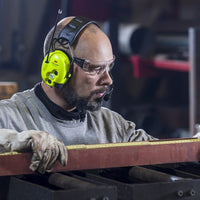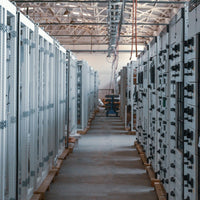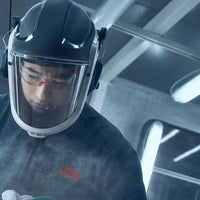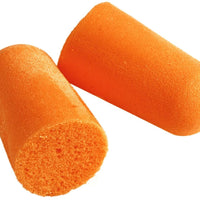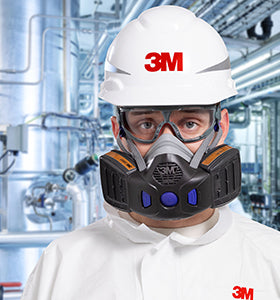Selecting the appropriate spray gun for your specific requirements can be a challenging task due to the numerous factors involved. It is crucial to determine whether an airless, gravity-fed, suction, or pressure fed spray gun is the most suitable option for your project.
What exactly is a spray gun?
If you are familiar with conventional painting and plastering techniques, you might be curious about the concept of a spray gun. Spray guns are similar to air brushes, but they are typically attached to larger machinery and are employed to apply a uniform layer of liquid over larger surface areas. This not only saves time for painters and plasterers, but also minimizes wastage. There are handheld spray guns available, as well as automated ones with interchangeable heads that offer various spray patterns. Additionally, there are top-of-the-line spray guns designed for extensive commercial and industrial projects, which can be customized and fully reconstructed.
Each air gun is equipped with an air compressor, paint basin, and nozzle. Upon triggering the device, the compressed air and paint combine to disintegrate the paint particles, which are subsequently sprayed from the gun in a fine mist to coat the surface. If you are inexperienced in painting or plastering, or if you wish to enhance your skills from past projects, do not hesitate to consult the experts at Best4Safety for guidance.
HVLP, LVLP, or Conventional Spray Gun?
High volume low pressure (HVLP) guns are designed to deliver a higher amount of paint or coating to the surface being sprayed. This not only reduces material usage and waste but also helps to prevent excessive overspray. HVLP guns are commonly used for applications such as architectural coatings, interior decoration, and furniture finishing. Low volume low pressure (LVLP) guns are very similar to HVLP guns but are considered to be some of the most efficient guns available. LVLP guns minimize paint waste by operating at a lower pressure and using less air compared to HVLP guns. This results in lower air consumption while ensuring a higher proportion of air reaches the target surface.
If you are inexperienced in the art of spraying paint or plaster, or if you wish to enhance your skills from previous projects, please contact the knowledgeable team at Best4Safety for the best advice.
Which type of spray gun should be used: HVLP, LVLP, or conventional?
HVLP guns, also known as high volume low pressure guns, enable a greater amount of paint or coating to effectively cover the intended surface. This not only minimizes material consumption and waste, but also prevents excessive overspray. Such guns find frequent application in architectural coatings, interior decor, and furniture finishing.
LVLP guns are highly similar to HVLP guns, but they stand out as some of the finest and most effective guns available. This is due to their exceptional ability to minimize paint wastage and function at a reduced pressure, utilizing a smaller amount of air compared to HVLP guns. Consequently, this results in a decrease in the quantity of air consumed while simultaneously increasing the proportion of air that successfully reaches the desired surface.
Choose the appropriate nozzle for the task at hand.
There are a variety of nozzle types available, with the three most popular being flat stream, hollow cone, and full cone nozzles. Your selection should be based on the specific project at hand. For instance, if you require a smooth finish over a wide surface area, a full cone nozzle might be the most suitable choice. Conversely, for a smaller area and a more accurate outcome, opting for a flat stream nozzle could be more appropriate.
What is the CFM Rating of your paint sprayer?
The measurement of air required to finish a project is quantified in Cubic Feet per Minute or CFM for brevity. This quantity can differ significantly, however, all compressors possess a CFM rating, usually displayed as follows: 16CFM @ 90 PSI. This rating represents the output capacity of the compressor tank, thus the actual CFM at the gun may fluctuate based on the size and length of the hose and fittings. Consequently, using a larger CFM at the gun can yield more accurate outcomes. If you require assistance in comprehending this concept, please do not hesitate to contact us.
Take into consideration the viscosity of paint, plaster, and other substances as they flow through your spray gun.
Whilst viscosity is typically categorized as low, medium, or high, it is advisable to consult the technical information provided for your paint as it may recommend a specific spray gun. Certain guns are better suited for applying heavy viscosity coatings. Your choice of spray gun will largely depend on the desired finish you are aiming for. It is important to note that a conventional gun tends to consume twice as much paint compared to an HVLP gun.
Please provide details on the production needs of your project.
To put it differently, what is the desired speed at which you want your gun to spray? By utilizing larger air caps and fluid nozzles, you can enhance your productivity. The air cap's CFM determines the viscosity of the coating it can atomize, with higher CFM allowing for heavier coatings. For extensive painting projects, employing a pressure pot to supply your spray gun offers superior air pressure control. For continuous painting, a diaphragm or fluid transfer pump may be the most suitable choice. 3M spray guns are suitable for low viscosity paints and small-scale projects. In certain situations, an airless spray gun may be the optimal solution.
What types of tasks do you expect your Spray Gun to perform?
How frequently do you plan on utilizing your spray gun and what kinds of projects will you be undertaking? In the realm of available spray guns, it is advisable to consider investing in a top-notch option like the 3M Spray Gun range. These types of guns typically offer a wider range of fluid nozzles and air caps, and are usually fully rebuildable. On the other hand, lower-priced guns tend to have fewer customization options and are often not able to be rebuilt. 3M spray guns are renowned for their exceptional quality and stellar reputation.
For any further information or advice on Spray Guns please contact our experts here at Best4Safety on 01903 896630.




